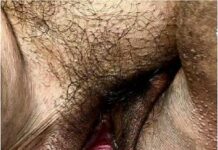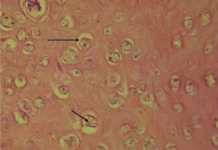The above image shows a congenital developmental disorder in which the neural tube defect fails to close, affecting the development of the brain and the skull bones. This anomaly is named as anencephaly and it is one of the most common types of neural tube defect (NTDs).
What is the neural tube?
Think of the neural tube as a sheet or plate of cells that are destined to form the brain and spinal cord. When the neural tube fails to close between the 23rd and 26th day of development, the neuronal tissues like that of the brain and spinal cord get exposed to the amniotic fluid, leading to degeneration and disintegration. This condition is called Anencephaly. The absence of major brain parts such as cerebrum and cerebellum along with defective, incomplete or absent skull bones makes it impossible for the baby to survive outside the womb. Postnatally, death ensues within a few hours, in fact, the majority are unable to make it through the pregnancy and succumb to death before birth.
Though anencephaly is the most common neural tube defect but it has a lower prevalence due to the fact that such pregnancies usually end up in a miscarriage, hence the lesser number of cases are reported at birth.
Having said that, a question arises: which pregnancies are prone to neural tube defects (NTDs)?
NTDs are multifactorial, i.e. genetic and environmental factors both play a role. It may occur without a prior history but chances increase to 10% in the subsequent pregnancies if one child is born with the NTDs.
Anencephaly is also associated with a couple of obstetric complications including malpresentation, preterm labour, postdate birth and polyhydramnios. The latter may lead to significant abdominal discomfort secondary to distension during labour.
Any tests that can detect it before birth?
Prenatally, a screening test on the maternal serum to check the levels of maternal alpha-fetoprotein between 16 and 18 weeks of gestation can be done. Higher levels of the former and of amniotic alpha-fetoprotein effectively aid in diagnosing anencephaly. The probable diagnosis can be further backed up by imaging studies such as a prenatal ultrasound. Postnatally, physical examination suffices.
What can be done?
As far as treatment is concerned, unfortunately, there is no cure for this lethal condition.
Pregnancies can either be terminated or if the baby sees the world, even then no heroic efforts are made, as death is an inevitable consequence. Instead, family counselling and a supportive environment should be provided to help the parents cope up with the trauma of losing their newborn. However, supportive treatment is provided during the first few hours if the baby manages to survive, to make the short survival comfortable for the baby. Although there isn’t a cure, there are ways to prevent it.
Folic acid supplementation of 0.4mg is recommended for all women of reproductive age to prevent neural tube defects. Women with a previous pregnancy or child with NTD should be recommended genetic counselling and higher doses i.e. 4mg of folic acid, at least 3 months before conception to lower the chances.
References
Robert G Best, P. F. (31 March 2016). Anencephaly. Medscape.
Wilson RD, Genetics Committee, Wilson RD, Audibert F, Brock JA, et al. Pre-conception Folic Acid and Multivitamin Supplementation for the Primary and Secondary Prevention of Neural Tube Defects and Other Folic Acid-Sensitive Congenital Anomalies. J Obstet Gynaecol Can. 2015 Jun. 37 (6):534-52
Mai CT, Isenburg JL, Canfield MA, Meyer RE, Correa A, Alverson CJ, Lupo PJ, Riehle‐Colarusso T, Cho SJ, Aggarwal D, Kirby RS. National population‐based estimates for major birth defects, 2010–2014. Birth Defects Research. 2019; 111(18): 1420-1435.
Cameron M, Moran P. Prenatal screening and diagnosis of neural tube defects. Prenat Diagn. 2009 Apr. 29(4):402-11.




